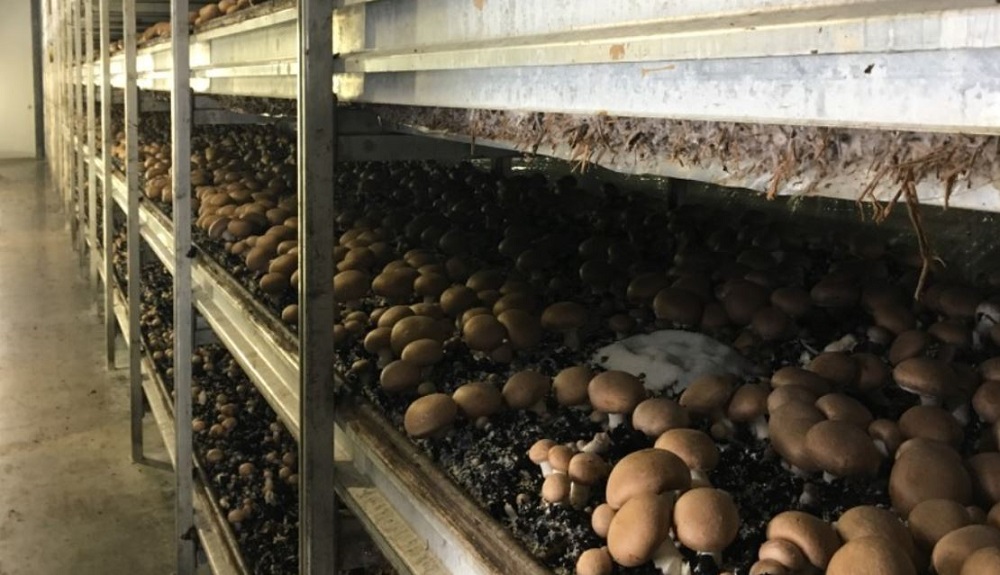Unleashing the might in chitin for soil health
Thursday, 23 June 2022
There is a group of largely untapped organic materials with the potential to enhance agricultural land quality. A new study has investigated how chitinous by-product streams could help underpin soil health.
There are well-documented benefits associated with the regular supply of traditional organic amendments to soil, which include manures, sewage, and composted green waste.
Soils that receive such biological inputs may be enhanced in many ways, including improvements to their nutritional content and moisture-retaining capacity.
The potential soil-improving nature associated with more novel product streams is helping to fuel demand for them. In turn, this is driving innovation in supply – both in terms of the raw materials used and the product types available.
A recent example of a novel approach is a partnership between Harper Adams University and Angus Horticulture Limited. They united to investigate how to turn chitin-containing by-products into high-value materials, such as soil amendments.
Chitin sources
The second most abundant polysaccharide after cellulose, chitin is found in many organisms, including crustaceans (e.g. crabs, shrimps and lobsters), molluscs (e.g. squid and octopi), fungi and insects.
The UK has numerous chitinous by-product streams, associated with shellfish, mushroom and black soldier fly production.
Globally, independent research has demonstrated soil benefits following the application of various chitinous amendments.
This project aimed to improve the quantity and quality of independent data available for UK chitin sources and cropping systems.
Literature review
Objective 1
A literature review found that soil-applied chitin or chitosan have several functions, including increasing organic matter, mycorrhizal activity, and plant growth.
Application of chitin and chitinous soil amendments was also found to be associated with activity against a wide array of crop pests and diseases, including clubroot, wart disease, late blight, and potato cyst nematodes.
The evidence of pest and disease suppression was primarily associated with elevated activity of micro-organisms that use chitinase to break down cell walls.
However, other mechanisms have been identified, such as the generation of ammonia following microbial degradation (microbes feeding on the chitin), direct interference with membranes, and the triggering of plant defences (through elicitation).
Analysis of chitinous by-products
Objective 2
The researchers analysed three product types of particular interest to UK markets:
- A black soldier fly by-product.
- Spent mushroom compost.
- Composted shellfish.
They found that these products contain relatively high levels of organic matter (25–73%) and macronutrients.
Additionally, products were associated with high carbon-to-nitrogen (C:N) ratios, with good potential for the nitrogen to be mineralised and made available to crops.
Several samples of each chitinous by-product were submitted to a laboratory for chitin analysis. Unfortunately, the results were largely inconsistent, possibly due to microbial breakdown.
The scarcity of institutes and companies providing appropriate analyses highlights an area for development, should the practice of applying chitinous by-products become more acceptable.
Legislation
Objective 3
Currently in the UK, shellfish and insect by-products are classed as animal by-products (ABPs). As such, government guidelines need to be followed to provide a route to application on land.
Spent mushroom substrate is classified as a non-meat food waste and subject to different regulations. For example, the ‘U10’ exemption in England allows up to 50 tonnes of spent mushroom substrate to be spread per hectare of agricultural land each year. In Scotland, application is regulated by SEPA.
A COSHH assessment should be used to help minimise risks during handling, transport, and processing (such as composting), as well as application to land.
However, following application, allergen risks associated with chitinous by-products are low.
The legislative situation on the use of such products is anticipated to alter following the implementation of new UK fertiliser product regulations.
Expected in 2023, the regulations are likely to include more detailed specifications of the requirements for soil improvers and amendments, and organic fertilisers, than the current legislation.
The future
The materials investigated in this project resonate with a circular economy (and bioeconomy) that straddles the aquaculture, insect and mushroom farming and agricultural sectors.
Adoption of such materials could contribute to a low-carbon economy and help the government reduce greenhouse gas emissions and increase carbon storage.
However, this work has identified many practicalities that require addressing to maximise the potential of such streams – in terms of their production and use.
The lessons from this project form a foundation for future research to help bring innovative soil amendment products to the market.
Access the full report on the use of chitinous biowaste streams as soil health amendments
AHDB/BBSRC net-zero partnership
This project was part of an AHDB/BBSRC partnership that aimed to support the agricultural transition to net zero.
Project costs were met through BBSRC’s Farm Sustainability Fund. The partnership supported ten projects that addressed priorities identified by farmers, including ways to cut greenhouse gas emissions and increase carbon storage.
Topics:
Sectors:
Tags:



